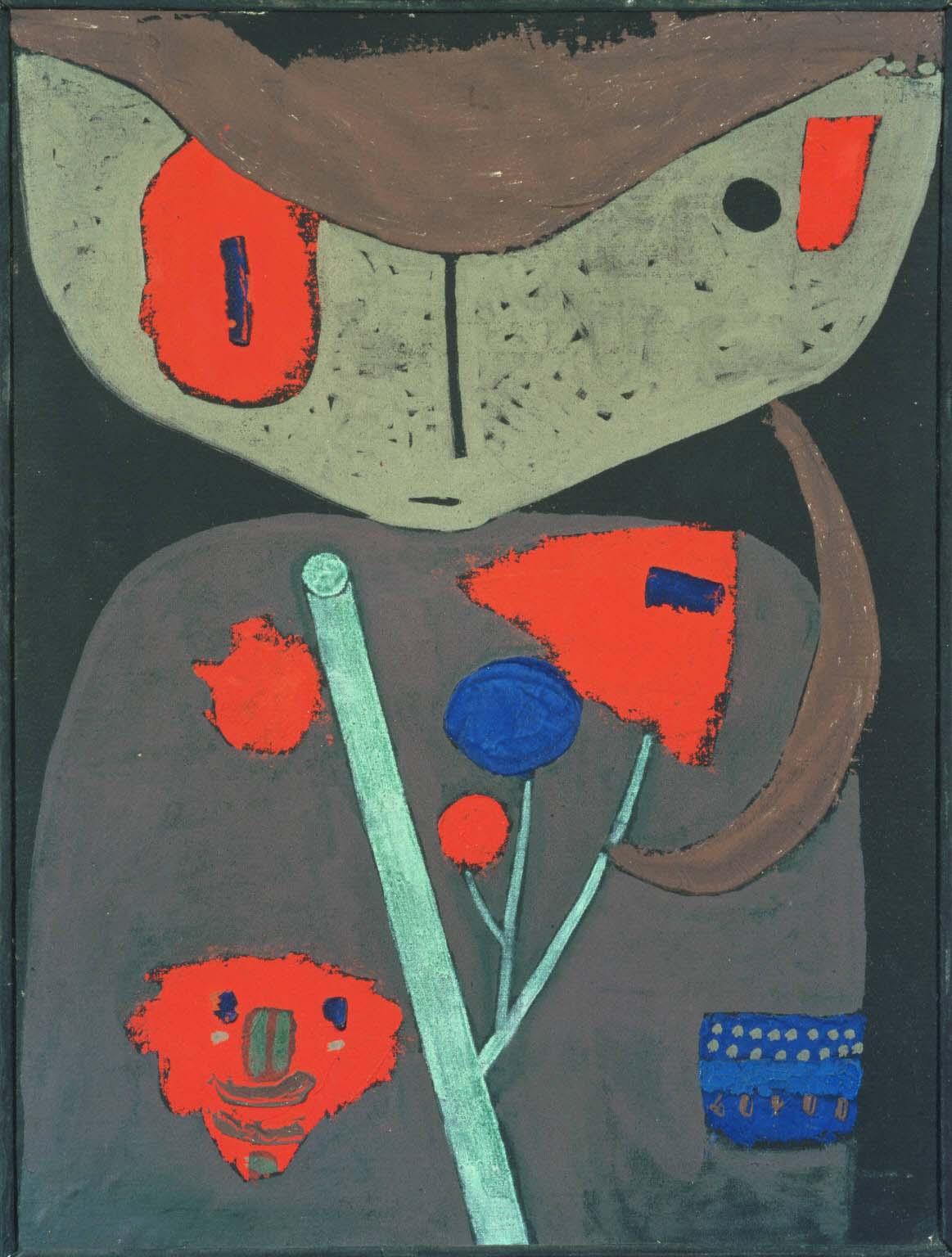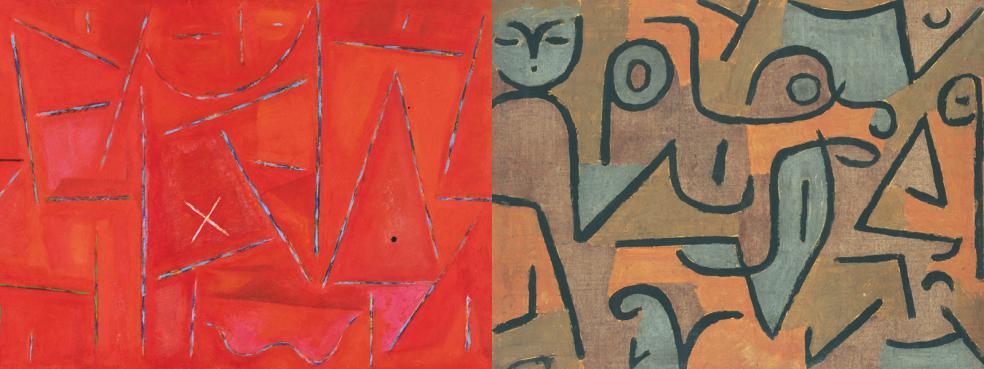Figure of the Oriental Theater
Paul Klee ( 1934 )

Klee’s passion for the theater in all its forms—from opera and cabaret to marionette and puppet theater—is poignantly revealed in Figure of the Oriental Theater. Although Klee never actually designed stage sets or costumes for a theatrical production, he was a fervent theater dweller who took great pleasure in observing the pathos of the human condition brought to life on the stage. Painted in 1934, Figure of the Oriental Theater recalls Klee’s particular fondness for non-Western theater, and Japanese performers in particular. Klee likely saw images of Kabuki actors and their marionettes on the pages of the French art journal, Cahiers d’Art. Masked performers also made a regular appearance in the theatrical performances staged by Oskar Schlemmer at the Bauhaus in the 1920s that Klee frequented. During these years, Klee was inspired to create a number of whimsical, caricatured puppets for his eight-year-old son Félix. His exaggerated portrayal of the Figure recalls all of these influences while also serving as a kind of autobiographical statement. Completed in the aftermath of his forced exile to Switzerland, Klee himself was grappling with his own identity and here joins the protagonist in confronting an uncertain future full of all the dualities embodied by the hidden persona behind the masked figure.
